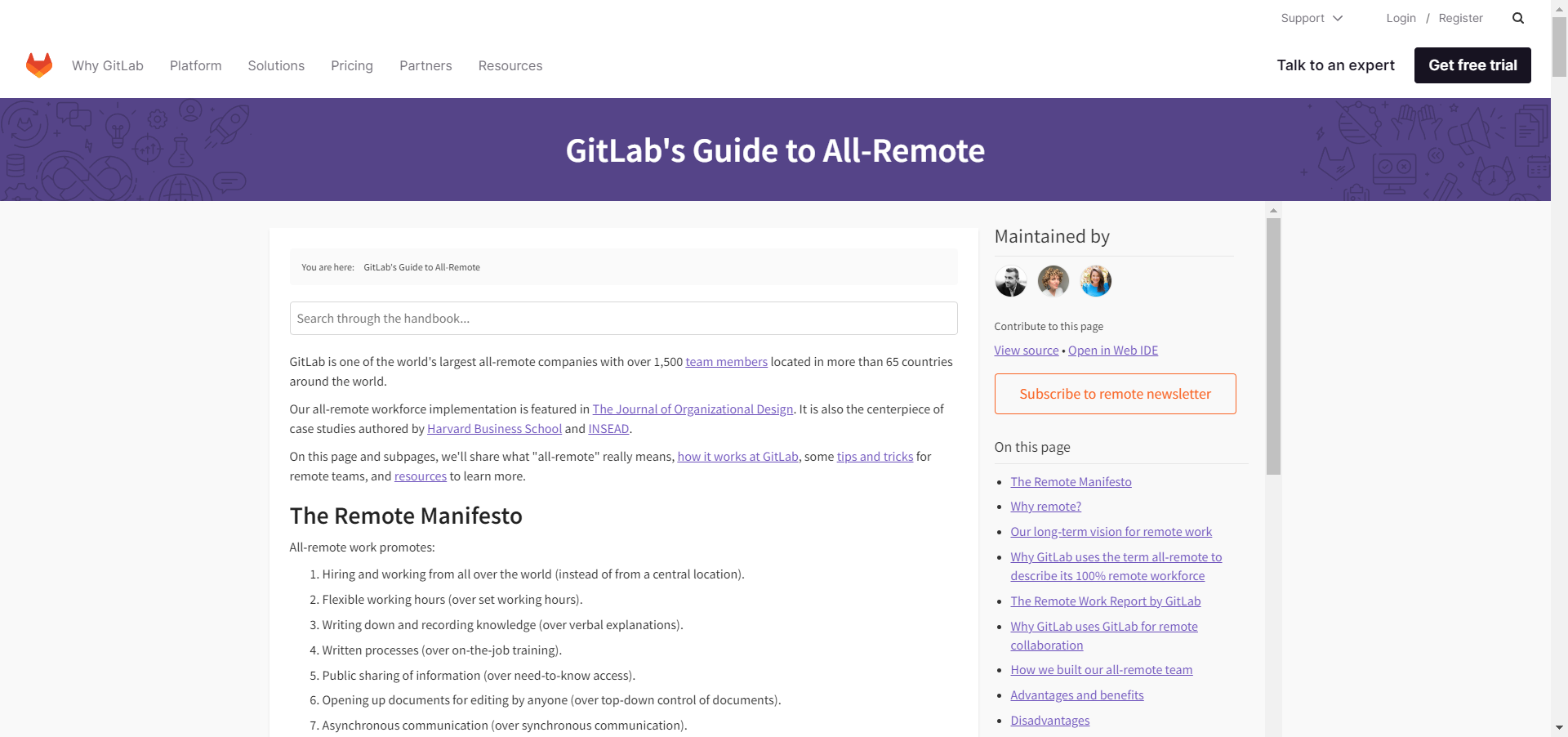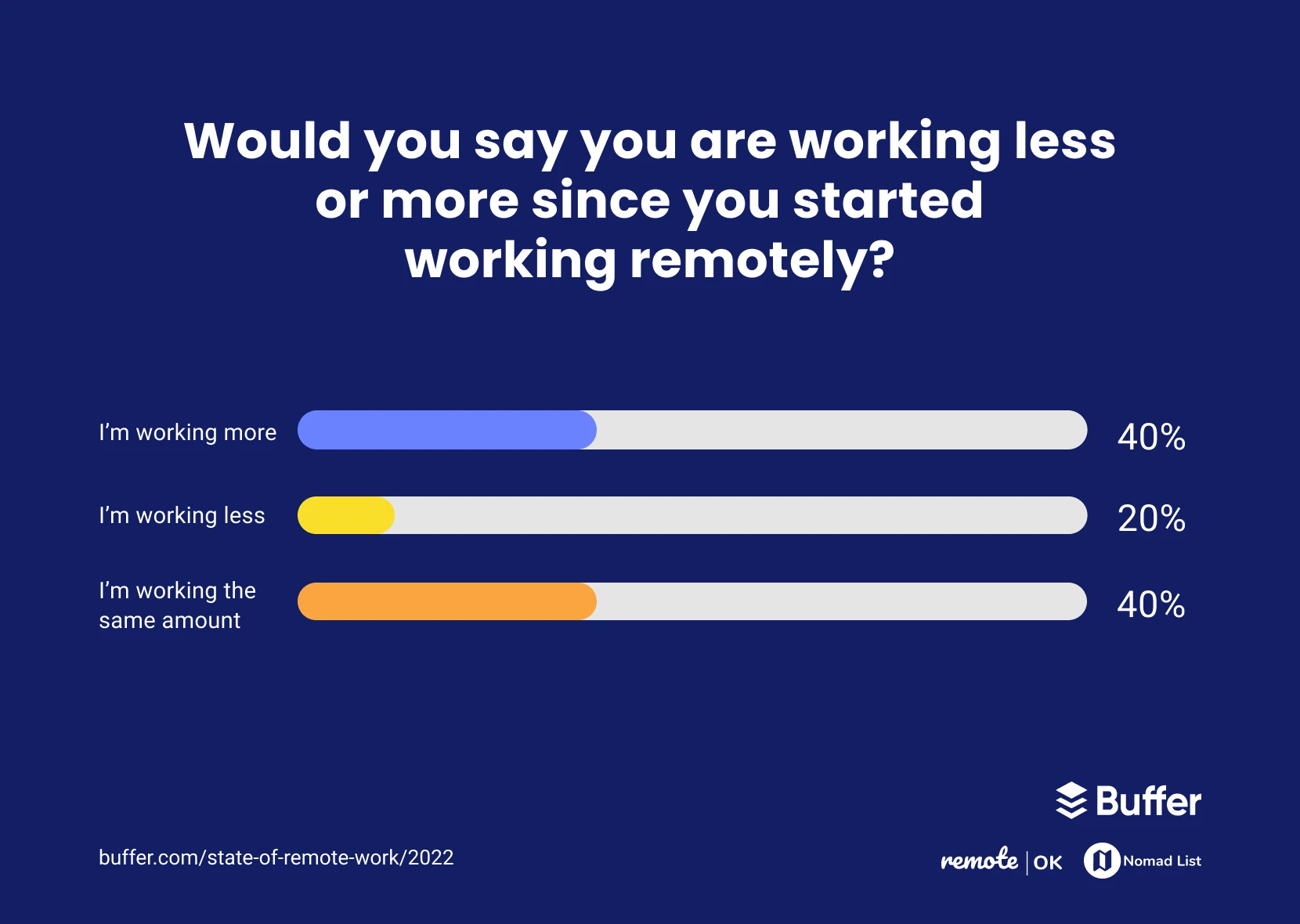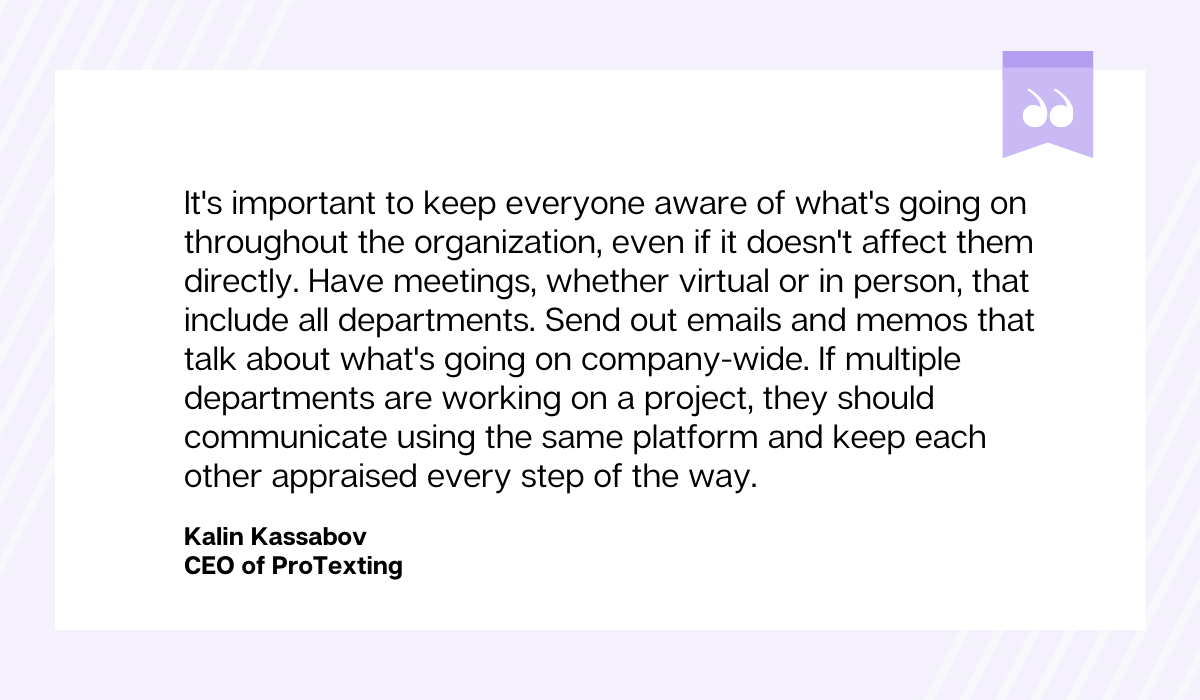
For a remote software development team to be successful, it needs to have a strong culture.
This can often be challenging, as building up a shared set of principles, values, and goals is hard when you and your team members aren’t in the same physical space.
The time zones and distance between you can make it difficult to create a real sense of community.
In this article, we collected seven ways to help you and your team develop a culture that will enable you to get the most out of your remote work arrangement.
Table of Contents
Have regular face-to-face meetings
Developers working in remote teams don’t have the same social interaction level as those working in an office.
Due to the lack of in-person conversations, it can be difficult for them to know each other well enough to develop a sense of team culture.
And, according to Buffer’s 2022 State of remote work, the result can be, among other things, increased loneliness.

However, through frequent video calls, companies have found that they can create a virtual office culture where employees can feel like they are working in a cohesive unit.
When team members know that they’ll see their colleagues through regular video calls, it enhances the bonding and the sense of camaraderie.
That’s also what Jeffrey Tiong, the Founder and CEO of PatSnap, suggests, stating that weekly face-to-face meetings can be an excellent way to boost a company’s culture.

In his own words, they give team members a chance to ask questions, collaborate, and learn important updates they may not have been privy to otherwise.
However, there’s still the question of what type of meetings would be best for fostering a strong culture in remote settings.
A possible answer to this question comes from Miro, an online collaboration platform whose remote workers have established regular meeting rituals, using, of course, their own software for this purpose.

At Miro, they have a lot of meetings.
There are the ones that are part of the standard workday, like one-on-ones and department meetings, as well as ones that happen less frequently, like quarterly all-hands or bi-weekly strategy sessions.

Get unreal data to fix real issues in your app & web.
Additionally, as many of their teams follow agile methodology, they also regularly conduct sprint planning, backlog grooming, and retrospectives.
While it may sound like a lot to keep up with, Miro’s teams have found that establishing a regular cadence for meetings helps them build a strong culture in their remote environment.
Host random informal meetings
Video calls are a great way to keep in touch with remote team members, but in terms of really taking the company’s culture to the next level, almost nothing beats the casual daily interactions.
Without daily informal meetings, remote teams risk falling into a state of isolation, where they cannot break down barriers and enjoy each other’s company.
And that risk is real. According to the statistics, remote employees feel less connected to their team members than the ones in offices.

Luckily, there are many ways around this problem.
For instance, you can establish consistent informal meetings where employees engage in non-work banter and are more open to communicating with one another.
For that purpose, Sacha Labourey, the Co-founder of CloudBees, recommends conducting regular virtual water cooler meetings.

To keep a strong sense of community, at CloudBees they’ve adopted the habit of holding virtual water cooler meetings once a week.
In these informal get-togethers, they discuss everything from business to personal life, which allows employees to feel more like they are part of the team despite the distance.
To host water cooler events, you can also use the possibilities of Microsoft Teams’ Together Mode or Zoom’s Immersive Scenes.

Both tools added virtual backgrounds, such as auditoriums, coffee shops, and even parts of famous architecture, to help remote teams feel more connected and less isolated from each other.
The team members can now feel like they are sitting together in the same office or room, even if they can be thousands of miles apart.
This helps create a sense of belonging and togetherness, and it’s a great opportunity for boosting the company’s culture.
Set effective work processes
While it can be hard to establish work processes when you’re leading a remote team, it’s imperative that you do so.
Formal procedures and processes are the foundation for building a positive environment where everyone is engaged, motivated, and productive.
In fact, according to Github’s State of the Octoverse Report, when developers have documentation such as guidelines, tutorials, dependencies, and best coding practices in place, they see about a 50% productivity boost.

And you don’t have to be a rocket scientist to see how this can positively affect the company’s culture.
In the absence of standardized processes, even small tasks can become stressful or frustrating.
Therefore, you should establish work practices and collect them in one central depository where they’ll always be available to all your team members.
That’s exactly what GitLab did with their online Guide to All-Remote, a central hub for all of their remote policies and procedures, as shown in the picture below.

Luckily for us, they made it public on their website so we can draw inspiration from this treasure trove of valuable information about remote work.
However, you don’t have to put your internal documentation on your website, as there is a wide array of cloud software that will do this job for you, such as Document360, GitBook, and Confluence.
For example, the picture below shows what your internal wiki can look like if you create it with GitBook.

GitBook is customized for software development and offers many features that will appeal to any developer, such as code snippets, markdown commands, and Git-style branching.
Of course, you can choose whatever tool you like.
The important thing is that it gathers all your work processes in one place to be easily accessible to all your team members.
Dedicate time for employee recognition
When it comes to appreciating your remote team members, you might feel a little out of sorts.
Sure, you can give them the performance review once a year, but in the meantime, how do you let your developers know that they’re doing a great job?
For instance, Nectar can help you celebrate your remote developers’ good work and recognize it in a way that goes beyond just saying “thank you.”

It has an intuitive interface, shown above, that makes it easy for you and your team members to send and receive recognition, celebrate milestones mutually, and give praise for the little wins.
Developers get points for any kind of contribution, and they can later redeem those points for Amazon gift cards, swag from the company’s store, or donations to charities.
While this is a great opportunity to show appreciation to the individual team members, your efforts don’t have to stop here. You can also give recognition to the team as a whole.
According to the studies, remote employees are working longer hours than before, and it can be difficult to avoid stress or burnout in this situation.

Therefore, Nick Drewe, the Founder and CEO of WeThrift, suggests giving your remote team members some time off to recharge their batteries.
In his own words, the occasional mental health day or half-day off can be a great way to show appreciation to your team for their efforts.

Remember, giving praise doesn’t have to be expensive or elaborate–it can be as simple as an email or some time off to leave your remote team members with a feeling they’ve been heard and appreciated.
You’ll be surprised at how far such small gestures can go in making the company’s culture more friendly, collaborative, and engaging.
Leverage collaboration tools
When employees are spread worldwide, keeping in touch and communicating regularly is essential to building a cohesive team and strong culture.
However, in reality, this may be harder than it seems, as remote employees report that one of their biggest struggles concerns issues with communication and collaboration.

Fortunately, modern communication tools are so good that staying in touch is easier than ever.
For instance, video conferencing platforms such as Zoom are indispensable in remote settings.
Zoom is simple and intuitive to use, so there’s no time wasted getting everyone up to speed—you can just jump right in and start talking with each other over video calls.

It also supports screen sharing, and you can record all of your meetings so you can refer back to them as needed.
However, keeping asynchronous communication alive through chats is also very important in remote environments.
If your team members work in different time zones or have flexible working hours, it’s much easier to keep everyone in the loop through a chat than waiting for everyone to gather for a video call.
Slack and Microsoft Teams have become major players in this area because they’re simple to use and have a myriad of useful features.
For example, you can use Slack channels to organize conversations based on a topic or project, and each channel can contain as many chats (or threads) as necessary.

As you can see on the left side of the picture, you can have channels for engineering, general issues, and water cooler conversations, among others, and chat with your team members about any relevant topic or issue that may come up.
As you can see, just because you and your team aren’t having conversations in person doesn’t mean you can’t cultivate a strong team culture and cohesion.
There are plenty of ways to connect virtually, and these tools will significantly help you along the way.
Encourage interdepartmental interaction
When remote employees only work with their immediate team, creating a culture in which everyone has a sense of belonging to the same company becomes harder.
It may seem like a mission impossible to create a feeling of camaraderie and community among different teams when everyone is scattered in different locations, and some teams might not even know about the existence of the other.
And yet some companies have managed to do it well enough to make teams feel like they’re part of something bigger than themselves.
For example, Kalin Kassabov, CEO of ProTexting, suggests hosting regular virtual meetings that include all departments, sending emails and memos with updates about what’s happening in the company, as well as using the same communication platform for that purpose.

Andrew Jornod, CEO of VertexOne, builds on that idea and recommends organizing virtual activities such as trivia games and lunch and learn events as a fun and engaging opportunity to bring people from different teams further together.
A great example of such an initiative comes from Isos Technology, which hosts virtual trivia sessions for team-building purposes, as shown in the tweet below.

You can also combine all-hands meetings with a good cause, as Bonusly did.
During the meeting, they enrolled in a virtual tour called Goat-2-Meeting in Catskill Animal Sanctuary, where they had a chance to hang out with more than 20 of their rescue goats.

That way, during the meeting employees had a chance to interact with each other in a relaxed and casual manner, and do a good deed of supporting rescue animals.
Of course, you can also host all sorts of other digital events, such as virtual yoga and cooking classes or happy hour gatherings, to name just a few.
Such activities can be extremely effective in bringing different teams together while at the same time promoting a sense of connection and healthy workplace culture.
Keep repeating your company’s story
Even working from home, team leaders must keep repeating the company’s story—its values, vision, and mission.
It’s easy to let these slip in a remote environment, where employees are often left to their own devices.
And this can have a negative effect on their morale because, as Stephen Kohler, the CEO of Audira Labs, points out, as humans, we have an inherited need to look for purpose behind the things we do.

In other words, we need to feel like our work matters.
When we’re at our office desk, we have constant reminders of the company and its values—we may see a founder walking by or a poster with the company’s mission hanging on the wall.
If those reminders disappear, keeping the company’s story in mind and ensuring everyone is still prioritizing it and contributing to its fulfillment becomes more challenging.
Therefore, in order to keep your team motivated, you must constantly remind them what their end goal is and why they are doing what they are doing.
Dharmesh Shah, a co-founder and CTO of HubSpot, shares the same opinion when he states that repetition is key when it comes to the company’s core messages.

As he points out in his blog post The remarkable power of repeating your mission and culture, that doesn’t necessarily mean that you should always repeat your mission and vision statements word by word like a parrot.
Instead, you should communicate the idea behind them as often as possible to make sure your core messages stay fresh in the minds of your team members at all times.
You can do that in a number of ways, such as by reminding them about it in company newsletters and blogs or by making it a part of your regular check-ins.
In the end, you can choose whatever method best suits your needs.
What’s important is to ensure that everyone feels like their contribution matters and works toward a higher goal.
Conclusion
In this article, we’ve covered seven ways to build a strong company culture in remote software development teams.
Building a healthy culture is crucial to having a successful remote team, from making sure your communication tools are in place to ensuring that developers have a lot of opportunities to get to know each other better regardless of the distance.
Hopefully, you’ll find these tips useful and take something away from them that can help you improve your remote team’s communication, productivity, and overall happiness.





